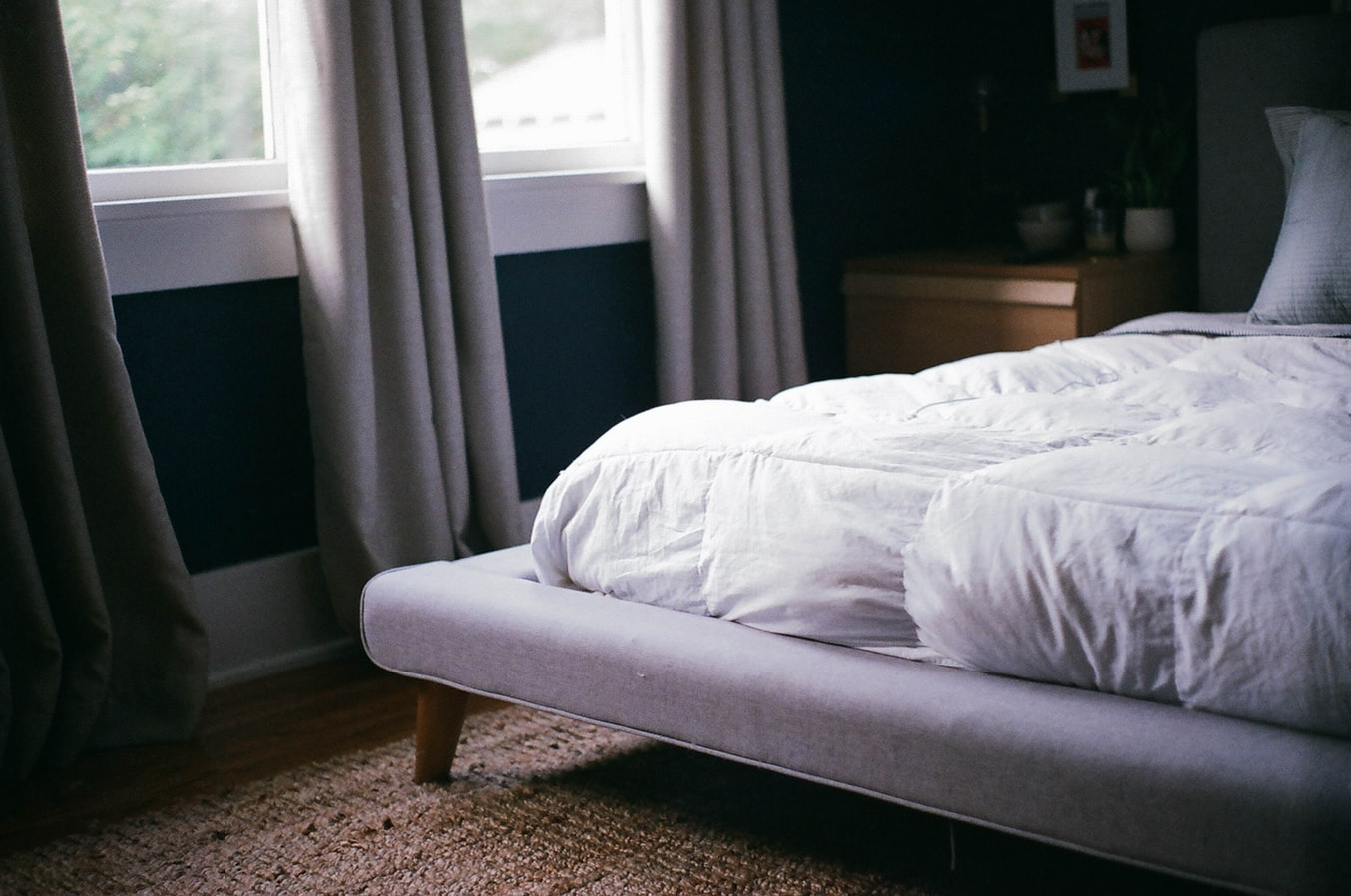
A good night’s sleep is called such because it literally does so much good for our bodies and minds. Sleeping poorly has been tied to just about every major mental and physical illness, because human beings need adequate sleep to function properly. Most of us know that sleep is a priority, but there are swarms of reasons why we might find it hard to fall asleep, stay asleep, or wake up feeling constantly refreshed. One of the most uncomfortable of these reasons is chronic back pain, but thankfully this literal ache can often be helped, if not healed, with the use of certain mattress toppers.
All mattress toppers are made for comfort, but the truth is that not all mattress toppers are made equal, so not all of them qualify as back-pain-friendly. Mattress toppers are crafted with a base of cotton, wool, latex, memory foam, feathers, or cruelty-free synthetic feathers. Each of these materials comes with its own pros and cons list, but only memory foam and latex have what it takes to make a difference when it comes to back pain and sleep.
BACK PAIN AND SLEEP
When we sleep, our bodies fall into a natural alignment and heal themselves, and, without our efforts, this posture produces two distinct curves: one at the nape of our necks and the other at our lower backs, near the base of our spine. Supporting these curves overnight relieves pressure on the body and reduces nagging back pains. While a few select medical conditions concerning back pain may automatically determine how soft or firm your mattress selection should be, most of us are left to play a guessing game to figure out how to best support our bodies. Even with hours spent window shopping, testing a new mattress in the store doesn’t ever really afford us the full experience, so we are usually gambling a bit on our first at-home night’s sleep.
MATTRESS TOPPERS
Many mattress supply stores now have 30-60 day return policies, but the hassle of loading and unloading a mattress when you already thought you had made a good purchase can be daunting and burdensome. Even Goldilocks had more than two tries to find the perfect bed, and we have to sleep on our chosen mattress for far longer, but that’s just the way it is. One way to help take the trouble out of this part of the process (whether you have already purchased a less-than-ideal mattress, your mattress is starting to lose its shape and quality, or if you are just getting started mattress shopping) is to bank on using a mattress topper.
From this point, product choices are narrowed down to just the two, making purchase selection far less complicated and far more likely to be successful. Both latex and memory foam mattress toppers are excellent choices to help combat back pain when sleeping because they both are made of pliable materials that mold to your body’s natural curves.
Back pain of this variety is typically due to pressure points that form as we sleep, centered around the back, shoulders, and hips. Preferred sleeping positions may impact where and how you feel that pressure, resulting in back pain. Individual, small pillows can be used to help level out the spine and neck in any sleeping position, but can become uncomfortable, hot, and disheveled throughout the night. Mattress toppers cover all or half of your bed, providing a large sleep surface that will create the same effect as all of the pillow wedges, but with twice the comfort.
MAKING THE BEST CHOICE
Some of these toppers are also created to provide a cooling sensation, as memory foam, particularly, can absorb and amplify body heat (which may be a bonus for some others). In general, back pain is different for each individual, so finding what works best for you is most important. The other major modification that affords an option when shopping for a latex or memory foam mattress topper is the thickness. These toppers typically range from 2-4 inches in thickness, with the thicker options providing the most support for severe back pain cases.
As always, be careful and feel free to discuss latex and memory foam mattress and mattress topper options with your doctor or physical therapist before making your selections. Latex is hypoallergenic, but many individuals have latex allergies, making this option null. The ultimate goal of these products is to help alleviate back pain by supporting the body’s natural curves, but the precise way to achieve that goal may vary slightly from person to person. Choosing a mattress topper takes a lot of the guesswork out of the process and can even temporarily extend the life of a mattress that is reaching the end of its quality span.
FRUSTRATION-FREE
In terms of functionality, the only major thing to consider is the fact that mattress toppers don’t often secure to the bed well. They also don’t always repel natural body oils, bodily fluids, stains, spills, and so on. For this reason, you may also want to invest in a mattress protector (sometimes called a mattress pad), which is a much thinner product that simply provides protection for your mattress and mattress topper. As noted, a mattress protector can also be helpful in holding your mattress topper in place, as it hugs the bed like a fitted sheet. Just be sure that it is large enough to fit over the thickness of the topper and your mattress, combined. With any luck, the fit will be snug, and it will keep your mattress topper secure, even when changing out fitted sheets.
Speaking of which, your fitted sheets may need to run a little large, as well, to accommodate your topper and protector. At this point in the game, many brands carry deep-pocket fitted sheets which are made just for this purpose. All of these mattress additions and sleep aids can also be purchased from a variety of outlets, offering a wider range of product options and more affordable prices than before. For example, memory foam has become significantly more accessible, especially in the form of a great mattress topper!
Resources— Mattress Guides, SuperComfySleep

